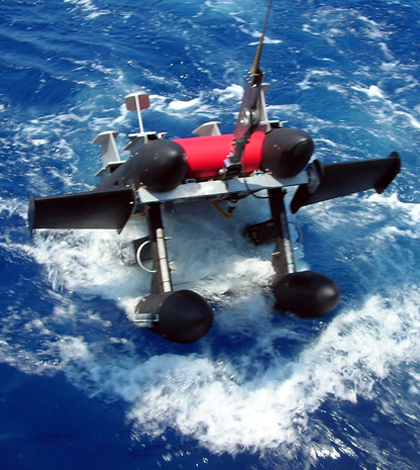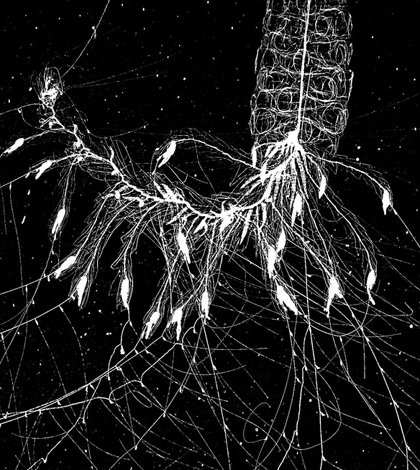ISIIS imaging system gets researchers up close with zooplankton

The In Situ Ichthyoplankton Imaging System, or ISIIS, towed behind a research vessel (Credit: University of Miami)
A new plankton imaging instrument developed by scientists from the University of Miami and BellaMare gets researchers up close and personal with zooplankton to reveal how the creatures live in their natural surroundings.
The imaging system, called the In Situ Ichtyoplankton Imaging System, or ISIIS, gives researchers a greater capacity to understand how plankton live, something physical samples alone cannot show completely.
“The ISIIS technology is helpful to understand the organisms’ distribution in relation to the physical environment, the relationship among different types of plankton and also to observe behavior,” said Cedric Guigand, senior research associate at the University of Miami Rosenstiel School of Marine and Atmospheric Science.
Observing individual zooplankton required a custom imaging system capable of photographing the small and intricate creatures in situ, while being towed by a research vessel.
“The challenge is to go from a concept of taking plankton images and building the system all from scratch,” Guigand said. “We learned a lot and made a lot of mistakes. It took us several years to really come up with an operational system that was user friendly.”
Guigand said the team began by developing a benchtop system to photograph plankton. When regular photography methods could not produce consistently discernible images of zooplankton, they turned to shadowgraghy, a method used to photograph fast-moving objects in ballistic analysis.
Instead of capturing light reflecting off the plankton in a camera, the method captures shadows. For the bench top model, a blue LED light shines through a lens and into a tank of plankton. The plankton cast shadows captured by camera, resulting in a detailed images of the creatures that are inverted to show plankton in white on a black background.

A zooplankton species image captured by the ISIIS of the coast of Southern California (Credit: Bob Cowen / University of Miami & Oregon State University)
The same technology was then incorporated into ISIIS with help from oceanic tow body and instrument housing company BellaMare. Two pontoons house a camera on one side and an LED light on the other. Lenses focus the camera and light, and a pair of mirrors make sure everything connects. Plankton floating between the pontoons are photographed as they go about their daily lives.
Water quality data is also collected simultaneously for parameters such as dissolved oxygen and chlorophyll. “Usually you can see the physical signature of the water masses you cross, (like) changes in temperature, salinity, but also a biological change in the community of observed organism,” Guigand said. “You may see the accumulation of certain plankton in frontal zones, where two water masses meet each other.”

The In Situ Ichthyoplankton Imaging System, or ISIIS, on deck (Credit: University of Miami)
One mission in 2010 in the Pacific’s Southern California Bight netted so many images that researchers had to ask the public for help. They created a crowdsourced data processing project called Plankton Portal in collaboration with Zooniverse.org to classify plankton in millions of images.
To see more images of zooplankton in action taken by ISIIS or to learn more about UM plankton research see the team’s site www.planktonportal.org.
Funding was provided by the National Science Foundation, NOAA, and University of Miami.




0 comments